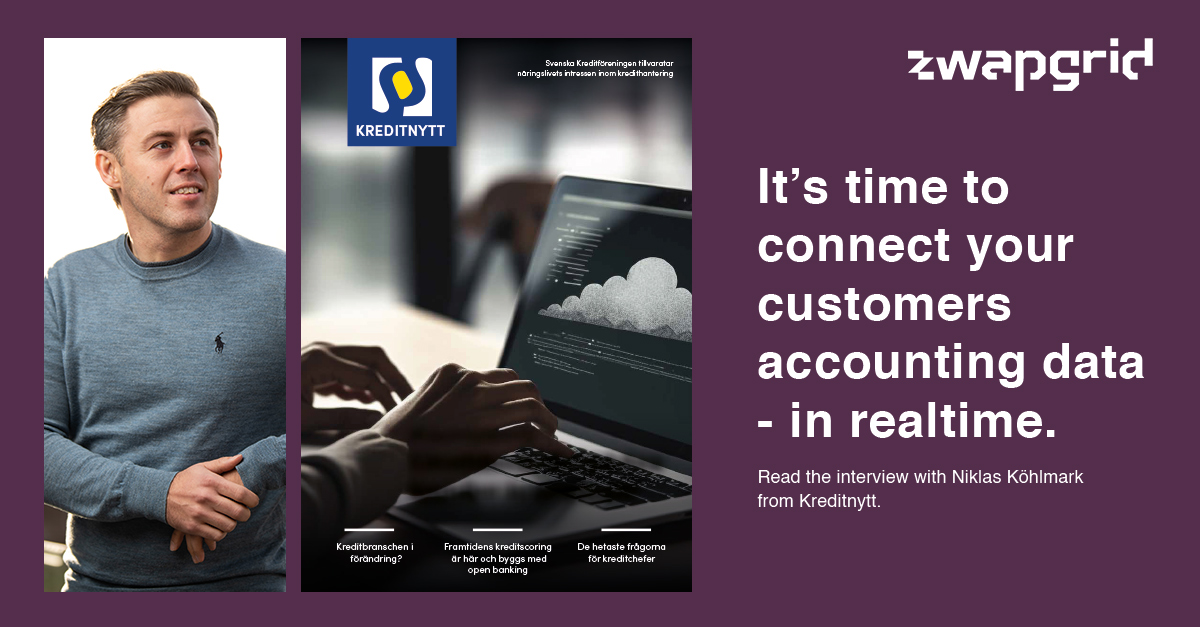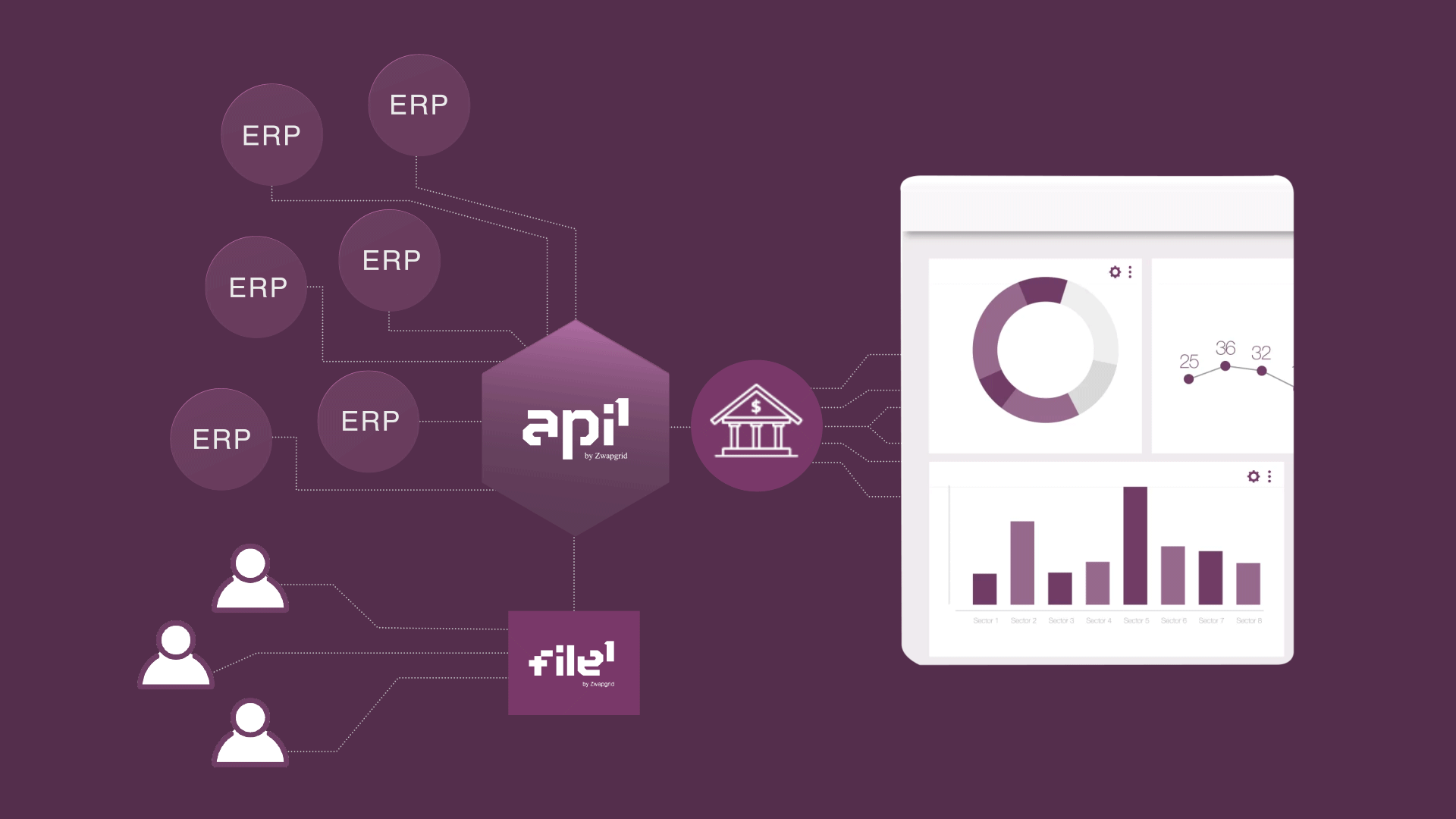It's time to connect your customers accounting data in realtime!

Read the whole interview from Kreditnytt (Credit news) nr 1 2024.
Since 2017, the Swedish Fintech company Zwapgrid has developed technology to share data between systems in a unified way. With this knowledge, they decided in 2022 to invest fully in building an infrastructure for the financial and credit market, to make it easy to on-board and connect customers' accounting systems and retrieve data. As product manager, Niklas Köhlmark has been involved in driving the project to the finish line and sees an increased need for effective ways to add accounting data to assessment processes.
- With accounting data, credit assessments can get one step closer to the truth. Open Banking is already used to see who owns an account, view balances or follow the history of transactions. Open finance technology with accounting data takes it a step further by providing more depth and detail, both historical and updated in real time. The really exciting thing happens when open banking, open finance and traditional credit analysis can be combined. Then we take a step closer to a transparent relationship with companies and a step away from unnecessary risk taking.
What does it take to access a company's accounting data?
- Thanks to new technologies such as ZwapgridAPI.1, getting started is now efficient and easy, without building and maintaining many integrations. This makes a big difference, especially if you operate in more than one market. Credit information and analysis companies, credit providers and finance platforms can connect and use accounting data in different ways to analyze, visualize and understand the actual financial situation of their customers.
- SMEs usually use systems with a high degree of standardization, while large companies have tailor-made solutions. Zwapgrid API.1 has solved this by making it possible to receive data from both APIs and files. All data is harmonized and retrieved in a uniform way regardless of its origin. It also facilitates the implementation of accounting data in your processes.

How does the availability of accounting data facilitate the assessment of a new customer?
- When on-boarding a new customer, updated accounting data can provide answers to what has happened since the last annual report and thus complement many of the reports already available. At the same time, both at an initial assessment and on an ongoing basis, it is possible to see whether the company is keeping its accounting records up to date, whether they are paying their invoices, whether their customers are paying their invoices, the average number of payment days, who their customers are, how sales are going in different regions, whether there may be a difference in how assets are valued compared to the market value and much more.
How does access to accounting data affect the ability to look ahead?
- Creating credible future scenarios and analyzing cash flow is much easier with access to both historical and real-time updated accounting data. You have all customer and supplier invoices and can see how much money should be coming in and going out each month, along with payroll data. You can also look further back in time and track variations over the years to understand if sales are seasonal, if there are recurring expenses during parts of the year or if income and expenses have always been dependent on a few customers. This allows for earlier flagging of risks or vice versa, opportunities to offer advice and the right type of financing.
- With connected customers, we get closer to the customer both at the first meeting, in real time, and can look ahead. We can stop thinking reactively and work proactively. This is a natural next step for anyone involved in assessment and lending, and should be one of the most important issues on the board and management teams agenda. Connect your companies' accounting systems and choose an infrastructure that can give you access to the data you need.
The time is now!